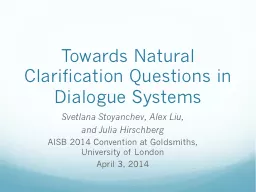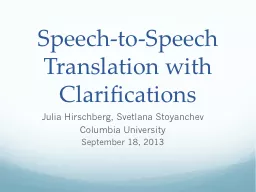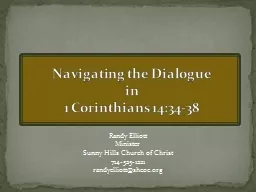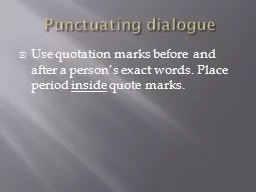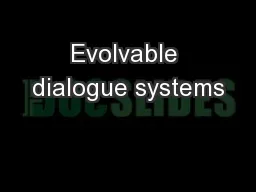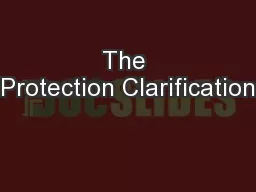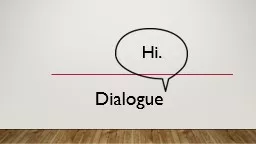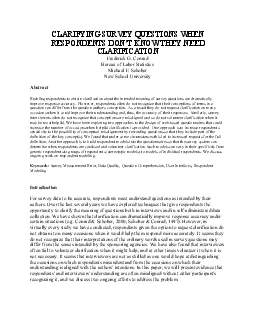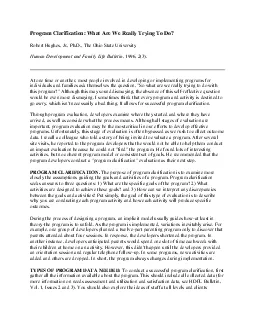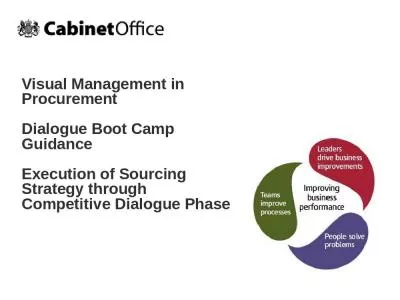PPT-Towards Natural Clarification Questions in Dialogue Systems
Author : olivia-moreira | Published Date : 2016-03-02
Svetlana Stoyanchev Alex Liu and Julia Hirschberg AISB 2014 Convention at Goldsmiths University of London April 3 2014 1 Outline Motivation Previous work a corpus
Presentation Embed Code
Download Presentation
Download Presentation The PPT/PDF document "Towards Natural Clarification Questions ..." is the property of its rightful owner. Permission is granted to download and print the materials on this website for personal, non-commercial use only, and to display it on your personal computer provided you do not modify the materials and that you retain all copyright notices contained in the materials. By downloading content from our website, you accept the terms of this agreement.
Towards Natural Clarification Questions in Dialogue Systems: Transcript
Download Rules Of Document
"Towards Natural Clarification Questions in Dialogue Systems"The content belongs to its owner. You may download and print it for personal use, without modification, and keep all copyright notices. By downloading, you agree to these terms.
Related Documents

